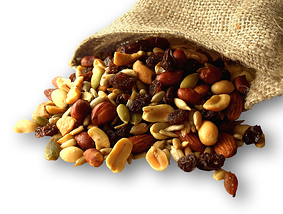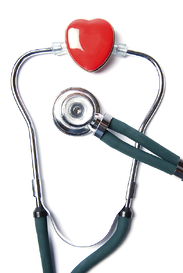This blog was written by Fitness Staff. Meet our blogging fitness specialists at the NIFS website.
 The e-mails are piling up, the phone is ringing off the hook, papers are stacked around you, and you are the go-to person at the office for all those who need a helping hand. While it may seem most productive for you to stay glued to your desk chair with your eyes fixed on the computer screen, it may actually not be the most productive choice after all.
The e-mails are piling up, the phone is ringing off the hook, papers are stacked around you, and you are the go-to person at the office for all those who need a helping hand. While it may seem most productive for you to stay glued to your desk chair with your eyes fixed on the computer screen, it may actually not be the most productive choice after all.
Just as your body needs rest after tiring physical activity, your mind needs breaks as well. In fact, your brain will be more likely to perform at an optimal level if it given rest breaks, just like your physical body performs best with adequate rest. Research has actually shown that employees who spend time daydreaming are more creative and better at generating ideas.
So, before responding to those e-mails, answering the phone calls, and being the helping hand for all, step away from the desk! Take a couple minutes to clear your head. Go for a walk, chat with a coworker, or eat lunch outside. Your body and mind will appreciate that rest break, but so will your business!

 Aim to eat a 150 to 300-calorie snack with a mix of carbs, protein, and healthy fats in between meals. Most likely, this will average out to eating approximately every two to three hours. Consistently fueling your body provides a boost to your metabolism and prevents the overeating that can happen all too easily when you approach a meal with an empty stomach.
Aim to eat a 150 to 300-calorie snack with a mix of carbs, protein, and healthy fats in between meals. Most likely, this will average out to eating approximately every two to three hours. Consistently fueling your body provides a boost to your metabolism and prevents the overeating that can happen all too easily when you approach a meal with an empty stomach. For you: Take care of yourself as well as your family by carving out time to exercise and limiting sedentary behavior, which will give you energy to keep up with your family’s busy schedule. It’s always important to lead by example.
For you: Take care of yourself as well as your family by carving out time to exercise and limiting sedentary behavior, which will give you energy to keep up with your family’s busy schedule. It’s always important to lead by example. It’s a new year, and you may be eager to start fresh with new resolutions, goals, and a lengthy to-do list. Give yourself the best chance to achieve success by providing your body with the energy it needs!
It’s a new year, and you may be eager to start fresh with new resolutions, goals, and a lengthy to-do list. Give yourself the best chance to achieve success by providing your body with the energy it needs! There is no doubt about it: water is good for you in several different ways. How much water is needed per day varies from person to person. Water needs vary because you need to take into account how active someone is or how much they sweat on average. So if the staff at your onsite corporate fitness center makes you sweat a lot during class, you need to be sure to drink plenty of water throughout the day to stay hydrated. Not drinking enough water can decrease your energy level and cause health issues.
There is no doubt about it: water is good for you in several different ways. How much water is needed per day varies from person to person. Water needs vary because you need to take into account how active someone is or how much they sweat on average. So if the staff at your onsite corporate fitness center makes you sweat a lot during class, you need to be sure to drink plenty of water throughout the day to stay hydrated. Not drinking enough water can decrease your energy level and cause health issues. With the holidays fast approaching, we are rolling into a busy and hectic time of the year. Stress can take a heavy toll on employee health. Here are some quick and easy ways your employees can de-stress and rebalance their minds and bodies.
With the holidays fast approaching, we are rolling into a busy and hectic time of the year. Stress can take a heavy toll on employee health. Here are some quick and easy ways your employees can de-stress and rebalance their minds and bodies. When was the last time you did an organizational health checkup? If your organization were one body, what would its state of health be? How would you read its vital signs? Permit me this analogy for a moment: The CEO is the head, the brain, the vision. Your employees are the rest of the body: limbs, skin, muscles, organs, and senses.
When was the last time you did an organizational health checkup? If your organization were one body, what would its state of health be? How would you read its vital signs? Permit me this analogy for a moment: The CEO is the head, the brain, the vision. Your employees are the rest of the body: limbs, skin, muscles, organs, and senses.
 It is no secret that
It is no secret that  Nothing brings about that glorious feeling of fall like crisp air, sunny days, brilliant foliage, football, apple cider… and all foods pumpkin!
Nothing brings about that glorious feeling of fall like crisp air, sunny days, brilliant foliage, football, apple cider… and all foods pumpkin!